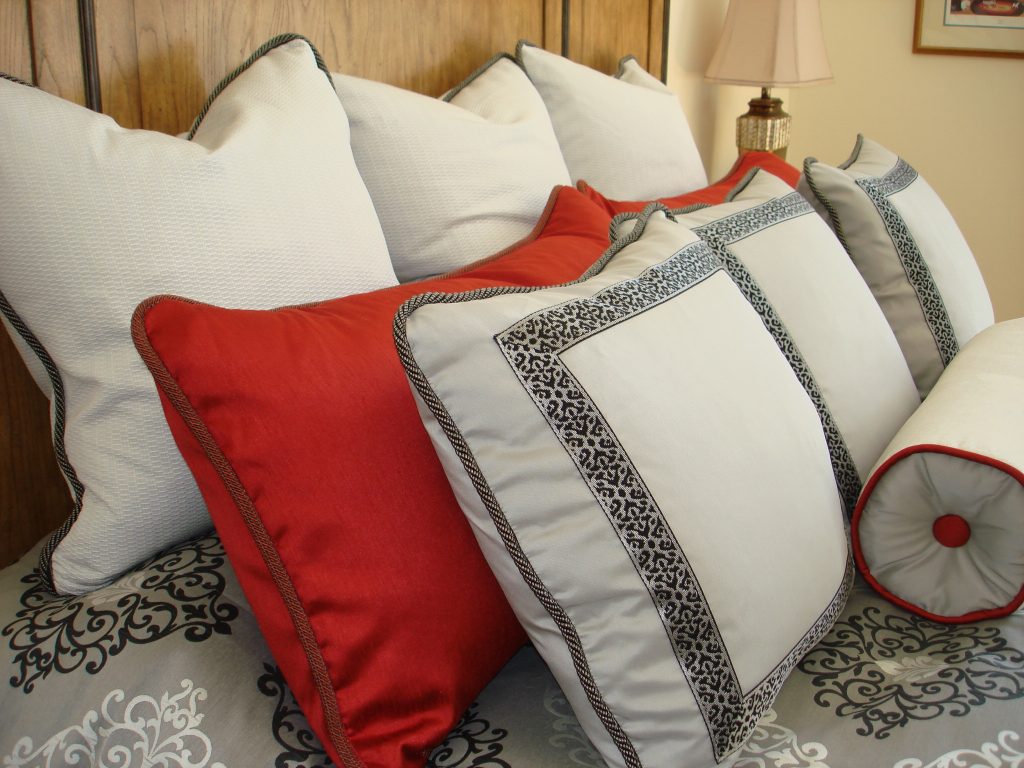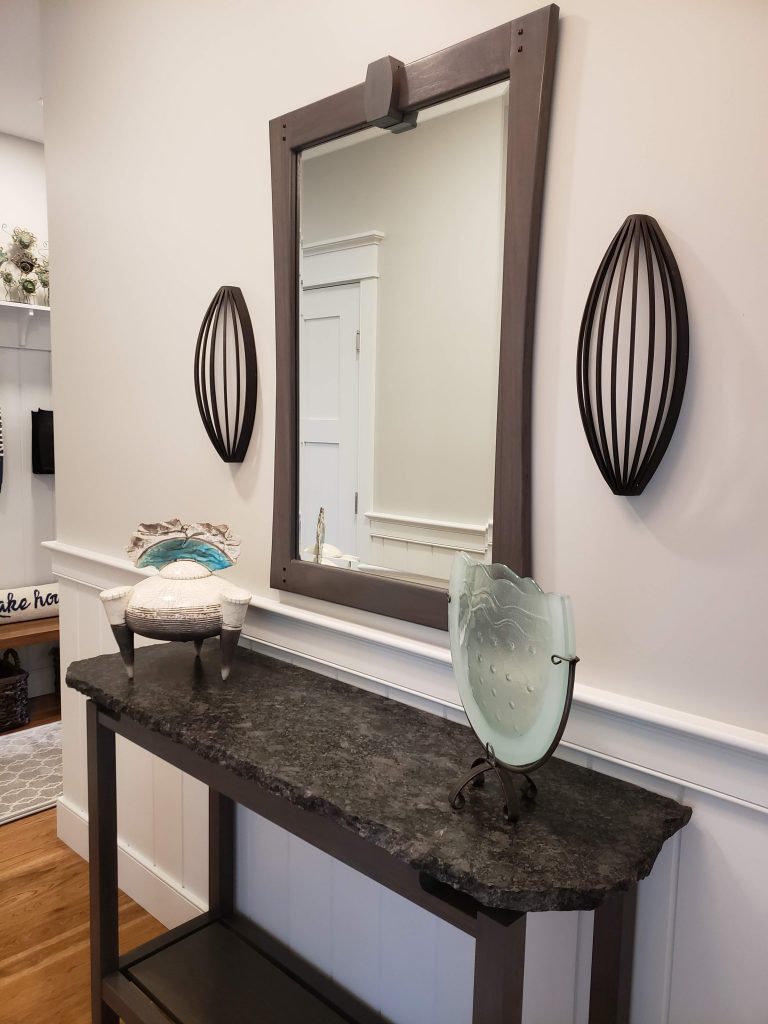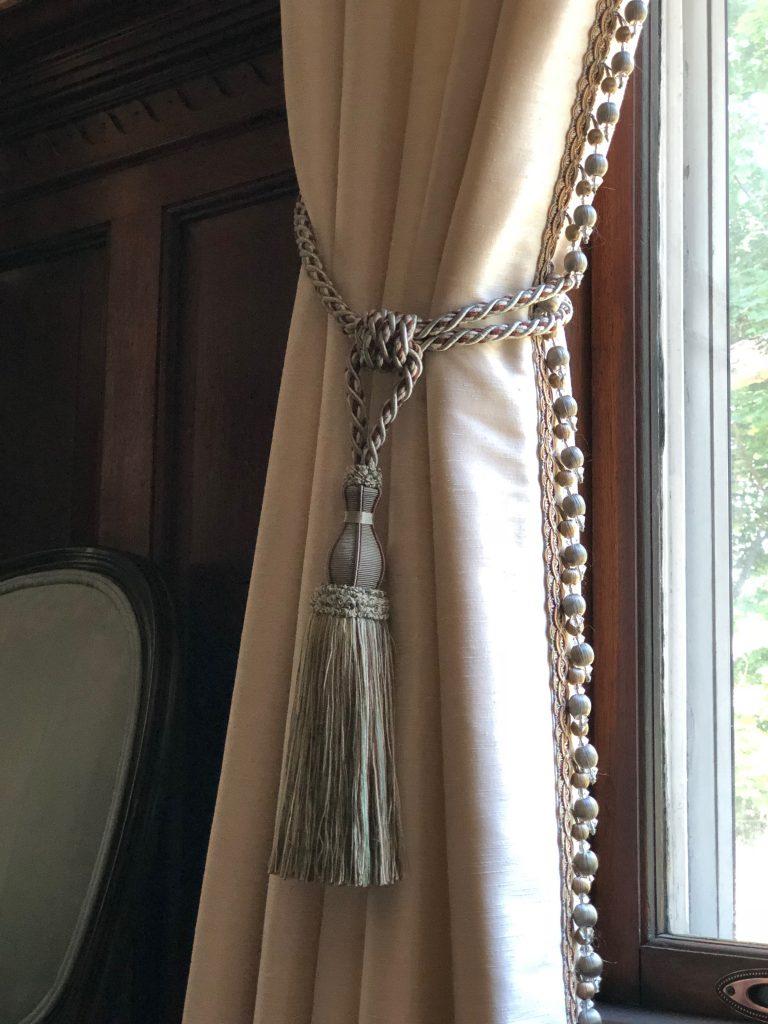Your bedroom should be your sanctuary. The place you long to retreat to at the end of the day. Yet, many of us skimp on putting the time, effort and money into turning our bedroom into a sleep haven. What you may not realize is the design of your bedroom could be affecting your sleep quality. If you are ready to invest in your bedroom by optimizing your space for better sleep, here are five easy tips for styling a bedroom for better sleep.
-
Create your sleep sanctuary
There are a couple intentional design choices you can make to turn your bedroom into the cozy haven you long for. You’ll want the energy of this room to feel inviting, not stressful.

source: All About Interiors
First, consider the color palette of the room. Neutral, cool colors such as pale blues, grays, creams and taupes are psychologically proven to have a calming effect – warm colors do the exact opposite. Keep the purpose of the space in mind when choosing paint colors. In this case, the purpose of the space is rest and relaxation. Remember to always choose a color palette that supports the intention of the room.
Next, optimize your lighting choices for sleep. You’ll want to use soft lighting that casts a peaceful ambiance come nightfall. You may consider adding soft lamp lighting on nightstands or dressers throughout the space.
 https://www.allaboutinteriors.org
https://www.allaboutinteriors.org
Another design element you may not think to consider is plants. Did you know, plants can help you sleep? In fact, they do more than add tranquility to a room. Indoor plants purify the air and replenish oxygen. Some of my favorite greens for sprucing up a living space are peace lily, aloe vera and golden pothos.
Finally, don’t forget cozy bedding – the focus of the room. When choosing your bedding, look for materials that make you want to crawl into bed. Whether that means splurging on the sateen sheets or custom duvet, pick what makes you excited to fall into bed each night! The fact of the matter is if you aren’t comfy, you won’t be able to fall asleep.
-
Splurge on your sleeping structure
Speaking of bedding, your mattress is not something to skimp on. The average lifespan of a traditional innerspring mattress is seven to eight years. Even if your mattress appears to be in good shape, you may need to pay closer attention to how you feel when you wake up.
If you tend to wake up with aches or pains, or you notice a sag towards the middle of the bed, it may be time to bite the bullet and go shopping. Your mattress is the tool used for getting your best night’s sleep – don’t go cheap on this one. Nowadays, you can find a quality mattress without spending thousands of dollars – you just have to look.
-
Block out the light
As you probably know, light can make or break a room. But one thing is for sure – you’ll want your bedroom as dark as possible come nighttime.
 Source: All About Interiors
Source: All About Interiors
Before the invention of the alarm clock, natural light communicated to our bodies, “Time to wake up!” However, you’ll want to keep that beautiful daylight from streaming in at the crack of dawn. The right window treatment may be just what you need to block out light and keep your room stylish – that’s what I like to call a win-win.
-
Deal with noise from the inside out
Bottom line: if your bedroom is noisy, you will have trouble sleeping. While you may not have as much control over external factors, like the fact that you live next to a highway or airport, you do have control over internal noise.
Optimize your bedroom to minimize noise from the inside out. Start be being cognizant of where you place your bed. If your bedroom shares a wall with your kiddo’s room or the laundry room, try placing the head of the bed as far away from that wall if possible. This may not always be feasible given the layout of your space, but it’s something to keep in mind.
Next, use soft surfaces more than hard surfaces. Did you know, hard surfaces reflect sound waves while soft surfaces absorb them? Try adding soft surface pieces to your bedroom. For example, if you have hardwood floors, add an area rug or a tufted headboard, rather than wood.
Once your interior is optimized, shift your focus to the exterior. While external noise is more difficult to manage, you may try soundproofing your home. Some quick tricks include adding weatherstrips to the windows and doors, using sound-blocking curtains or even purchasing a sound machine to mask the noise.
-
Clear out the clutter
A cluttered room achieves the exact opposite of creating a haven for peaceful sleep. According to a study by UCLA researchers, physical clutter overloads your senses, which leads to stress. Stress that results from a messy room is the last thing you need impacting your sleep. Why lose sleep over something you can easily manage?
Take a quick glimpse around your room. Is there anything you can get rid of? A good rule of thumb is for every time you add something new to a space, get rid of something else. It may even be time for a detox for your home.
Interior design goes far beyond looks. It’s about functionality. Now you can sleep easy at night knowing your room is helping you get your best sleep possible!
This post is a collaboration. All opinions are our own.

